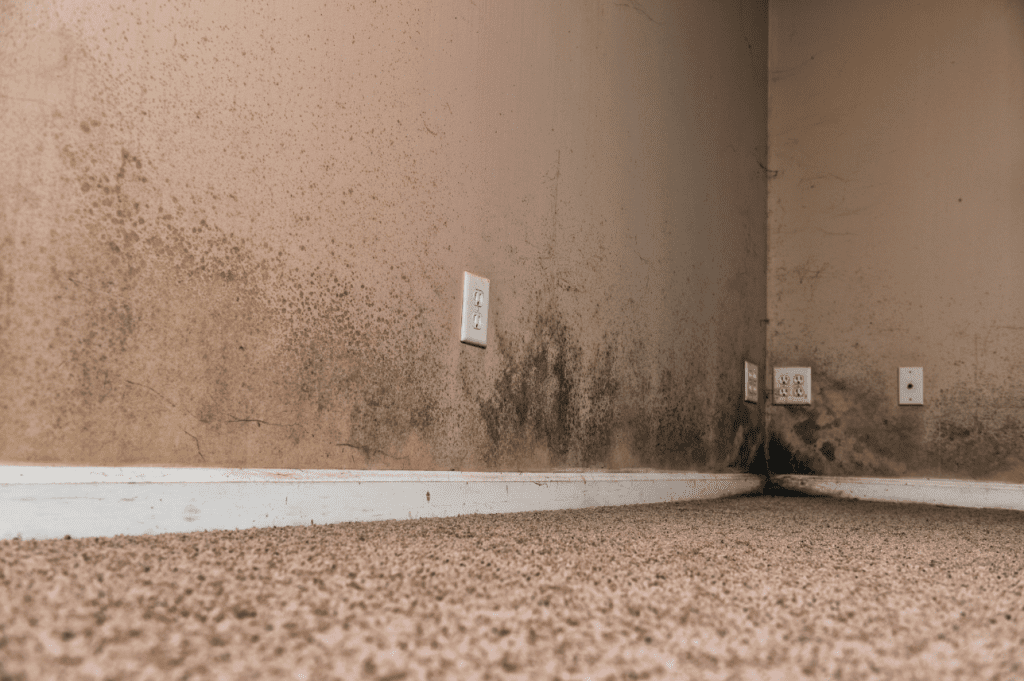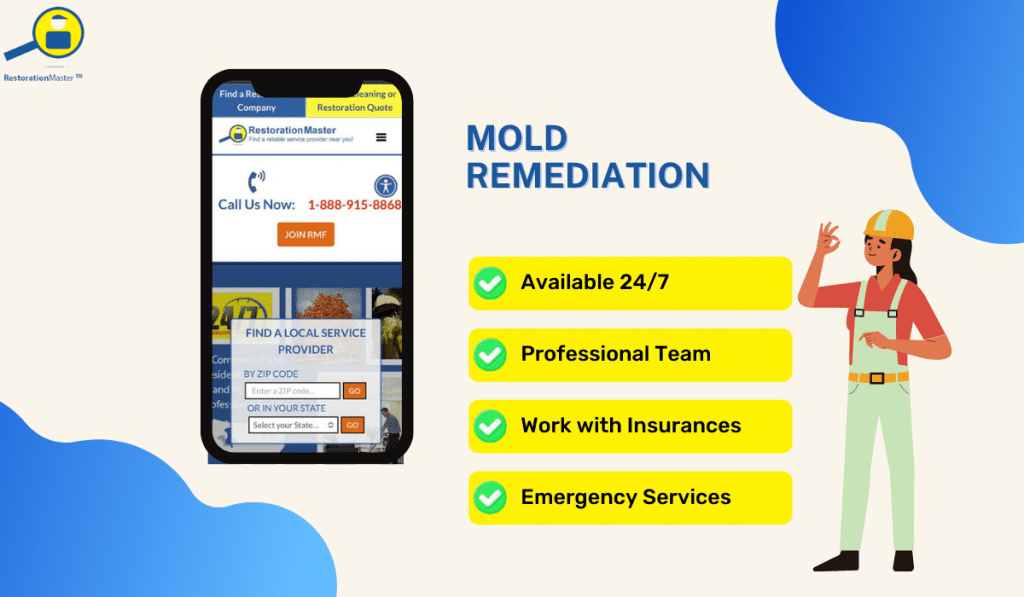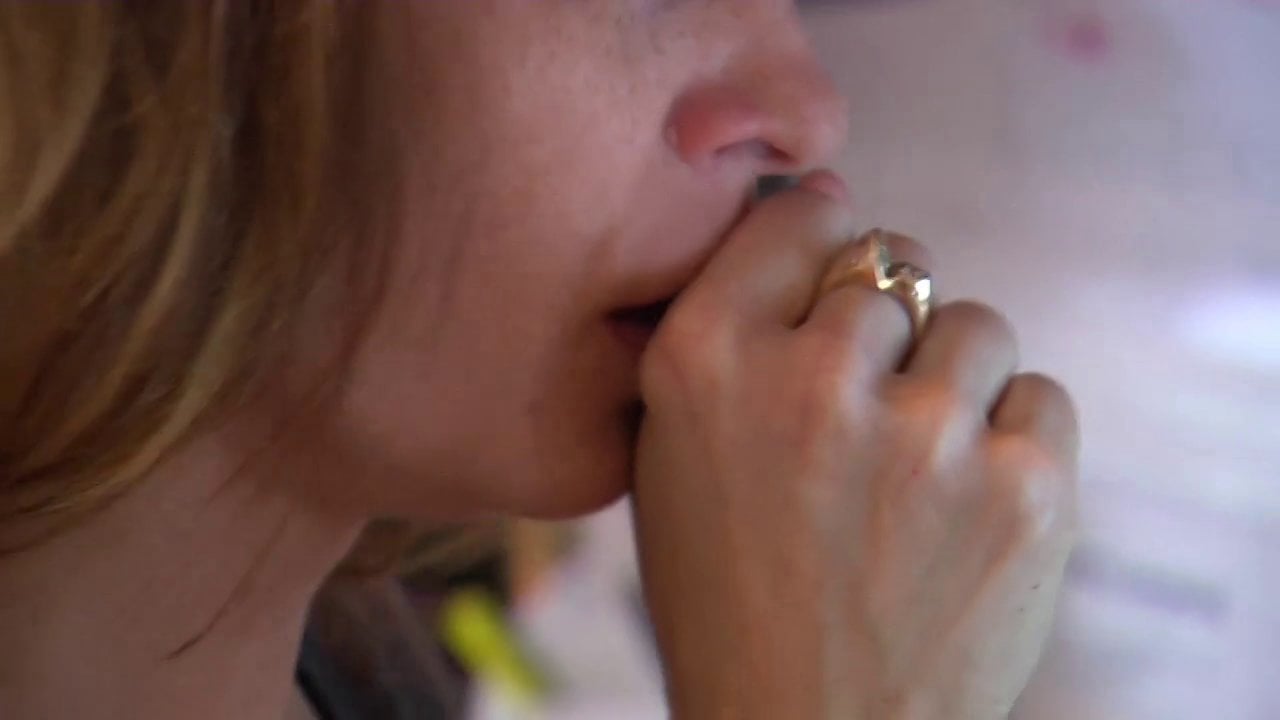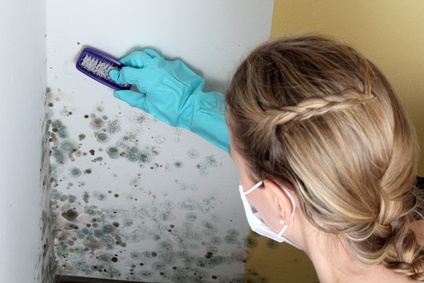How to Remove Brown Mold from the Basement
MoldMold is a type of fungus that grows in damp or humid conditi... More is something that homeowners never want to come across in their residential property. But moldMold is a type of fungus that grows in damp or humid conditi... More sporesSpores are microscopic reproductive units of fungi or mold t... More are naturally present in the air and can cause moldMold is a type of fungus that grows in damp or humid conditi... More growth to occur at any moment. One of the most common places that moldMold is a type of fungus that grows in damp or humid conditi... More can be found growing in a home is the basement.
Basements are prone to being affected by moisture, and moisture is a key ingredient for moldMold is a type of fungus that grows in damp or humid conditi... More growth. So, if there is excess moisture in the basement of your home, then there is a good chance that moldMold is a type of fungus that grows in damp or humid conditi... More growth will soon follow.
If you do come across moldMold is a type of fungus that grows in damp or humid conditi... More growing in your basement, then you must act promptly to address the fungus. This is especially the case with brown moldMold is a type of fungus that grows in damp or humid conditi... More, which is a type of moldMold is a type of fungus that grows in damp or humid conditi... More that is commonly found in the basement. The longer that moldMold is a type of fungus that grows in damp or humid conditi... More growth goes unaddressed, the more damage it will cause to your property.
Continue reading to learn more about basement moldMold is a type of fungus that grows in damp or humid conditi... More and how to go about the mold removal process.
What Causes MoldMold is a type of fungus that grows in damp or humid conditi... More Growth to Occur?
As aforementioned, moldMold is a type of fungus that grows in damp or humid conditi... More growth can occur at any time because of the way moldMold is a type of fungus that grows in damp or humid conditi... More sporesSpores are microscopic reproductive units of fungi or mold t... More are naturally present in the atmosphere and can easily make their way into your home’s air space. Once moldMold is a type of fungus that grows in damp or humid conditi... More sporesSpores are microscopic reproductive units of fungi or mold t... More encounter an environment that suits their needs, moldMold is a type of fungus that grows in damp or humid conditi... More growth can be triggered.
Aside from a moisture source, moldMold is a type of fungus that grows in damp or humid conditi... More also needs an organic food source to grow. Oftentimes, moldMold is a type of fungus that grows in damp or humid conditi... More will use cellulose as food. This substance can be found in many common building materials, including drywall and wood. This is also why moldMold is a type of fungus that grows in damp or humid conditi... More growth is a common occurrence in the aftermath of water damage. Furthermore, when moldMold is a type of fungus that grows in damp or humid conditi... More grows on a surface, it uses it as a food source. The moldMold is a type of fungus that grows in damp or humid conditi... More eats away at the material’s structureStructure refers to the framework or components of a buildin... More which can leadLead is a heavy metal that can be toxic to humans, especiall... More to severe structural harm.
In the basement, any walls and furnishings affected by water can become susceptible to moldMold is a type of fungus that grows in damp or humid conditi... More growth if they are not dealt with in a prompt manner.

moldMold is a type of fungus that grows in damp or humid conditi... More in the corner of the basement
What Should I Know About Brown MoldMold is a type of fungus that grows in damp or humid conditi... More?
Brown moldMold is a type of fungus that grows in damp or humid conditi... More can refer to a variety of moldMold is a type of fungus that grows in damp or humid conditi... More species, as there are numerous moldMold is a type of fungus that grows in damp or humid conditi... More types that can have a brown appearance. This can include cladosporium, ulocadium, stemonitis, and more. They are often found growing on ceilings, walls, wood, and other hard surfaces.
While brown moldMold is a type of fungus that grows in damp or humid conditi... More implies a brown color, it can look closer to black in color. Texturally, brown moldMold is a type of fungus that grows in damp or humid conditi... More might be fuzzy, getting thicker with time. However, some brown moldMold is a type of fungus that grows in damp or humid conditi... More will develop into blob-like shapes.
Like other types of molds, brown molds can cause people to experience health problems. MoldMold is a type of fungus that grows in damp or humid conditi... More exposure can leadLead is a heavy metal that can be toxic to humans, especiall... More to allergy-like symptoms like nasal congestion, coughing, sore throat, and more.
How Can Basement MoldMold is a type of fungus that grows in damp or humid conditi... More be Prevented?
The key to preventing moldMold is a type of fungus that grows in damp or humid conditi... More not only in your basement, but elsewhere in your property, is to control the moisture level. When you minimize the amount of excess moisture in an area, you prevent the environment from taking on the ideal conditions for moldMold is a type of fungus that grows in damp or humid conditi... More growth. So, if any water accumulates in your home or business, address it promptly. If your property experiences water damage, then do not hesitate to get the problem resolved.
How Do I Remove Basement MoldMold is a type of fungus that grows in damp or humid conditi... More?
Before even trying to remove basement moldMold is a type of fungus that grows in damp or humid conditi... More, you first need to address the moisture source that has triggered the moldMold is a type of fungus that grows in damp or humid conditi... More growth. Otherwise, water will continue to affect your property and encourage additional moldMold is a type of fungus that grows in damp or humid conditi... More growth. Once the moisture source has been dealt with properly, then you can turn your attention to moldMold is a type of fungus that grows in damp or humid conditi... More removal.
If the basement moldMold is a type of fungus that grows in damp or humid conditi... More has not affected too large of an area in your property, then there are do-it-yourself moldMold is a type of fungus that grows in damp or humid conditi... More removal techniques that you can use. If the basement moldMold is a type of fungus that grows in damp or humid conditi... More has damaged a significant portion of the area, then moldMold is a type of fungus that grows in damp or humid conditi... More removal should be conducted only by qualified professionals. If you have moldMold is a type of fungus that grows in damp or humid conditi... More allergies, then resort to professional mold remediation help regardless of the amount of basement moldMold is a type of fungus that grows in damp or humid conditi... More.
When conducting moldMold is a type of fungus that grows in damp or humid conditi... More removal on your own, wear protective gear, including a face mask, rubber gloves, and goggles. You will need either a spongeA sponge is a porous material used to absorb liquids or clea... More for softer surfaces or a stiff brush for hard, porousPorous describes a material that contains small openings or ... More surfaces.
Create a solutionA solution is a homogeneous mixture of two or more substance... More of 2 cups of water and 2 tablespoons of baking soda, and then place the solutionA solution is a homogeneous mixture of two or more substance... More in a spray bottle. Spray the affected area, and then scrub it. For tougher moldMold is a type of fungus that grows in damp or humid conditi... More situations, make a paste that is equal parts water and baking soda. Then scrub the area with the paste.
You can also try a solutionA solution is a homogeneous mixture of two or more substance... More that is equal parts vinegar and water. Spray the solutionA solution is a homogeneous mixture of two or more substance... More on the moldy area, and let it sit overnight. The next day, scrub it down with soap and water.
Professional Mold RemediationMold remediation is the process of identifying, removing, an... More Services

If you have basement moldMold is a type of fungus that grows in damp or humid conditi... More, then moldMold is a type of fungus that grows in damp or humid conditi... More removal must be done right away. RestorationMaster can help with your basement moldMold is a type of fungus that grows in damp or humid conditi... More issue through the professional mold remediation services that we offer to homes and businesses nationwide.












